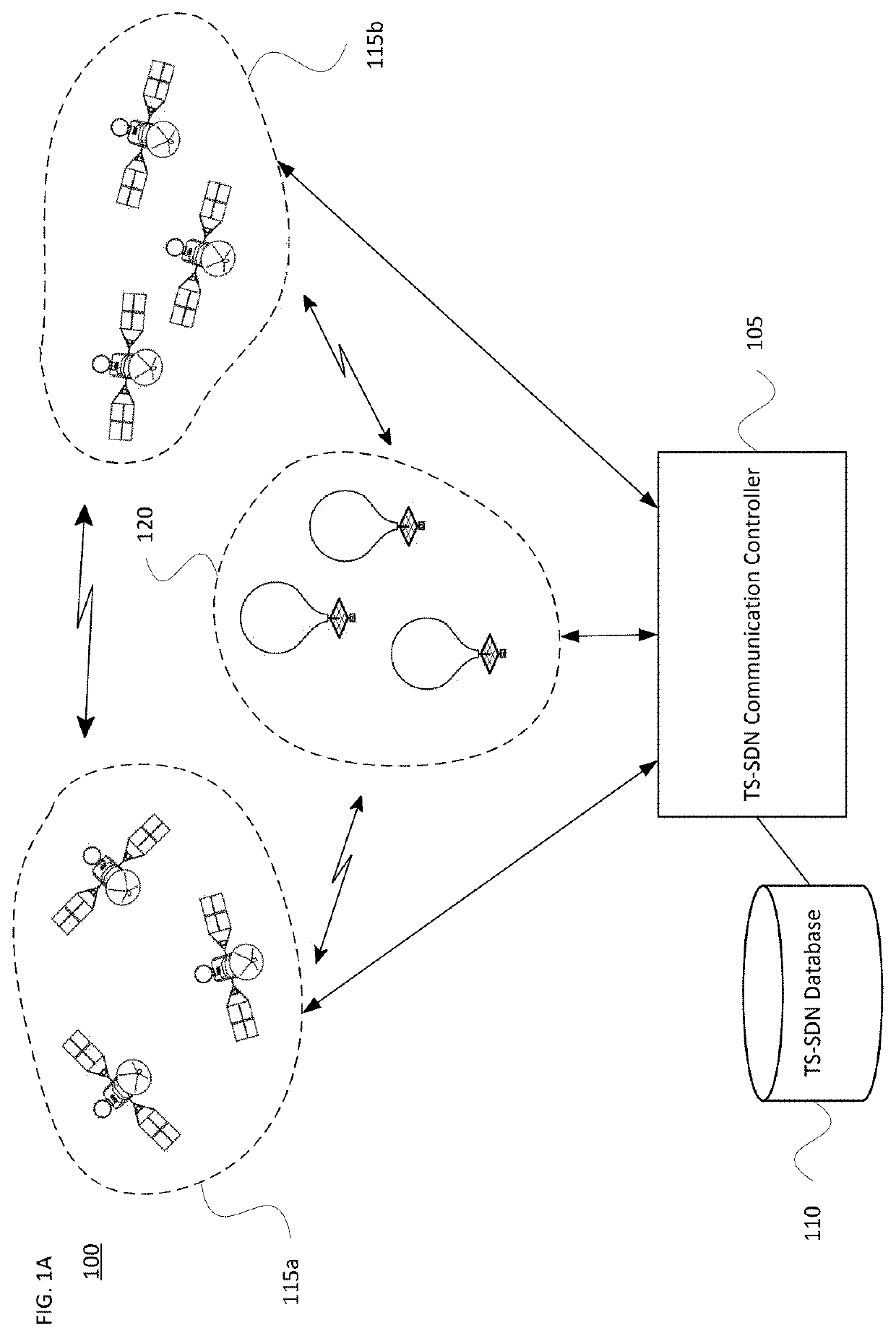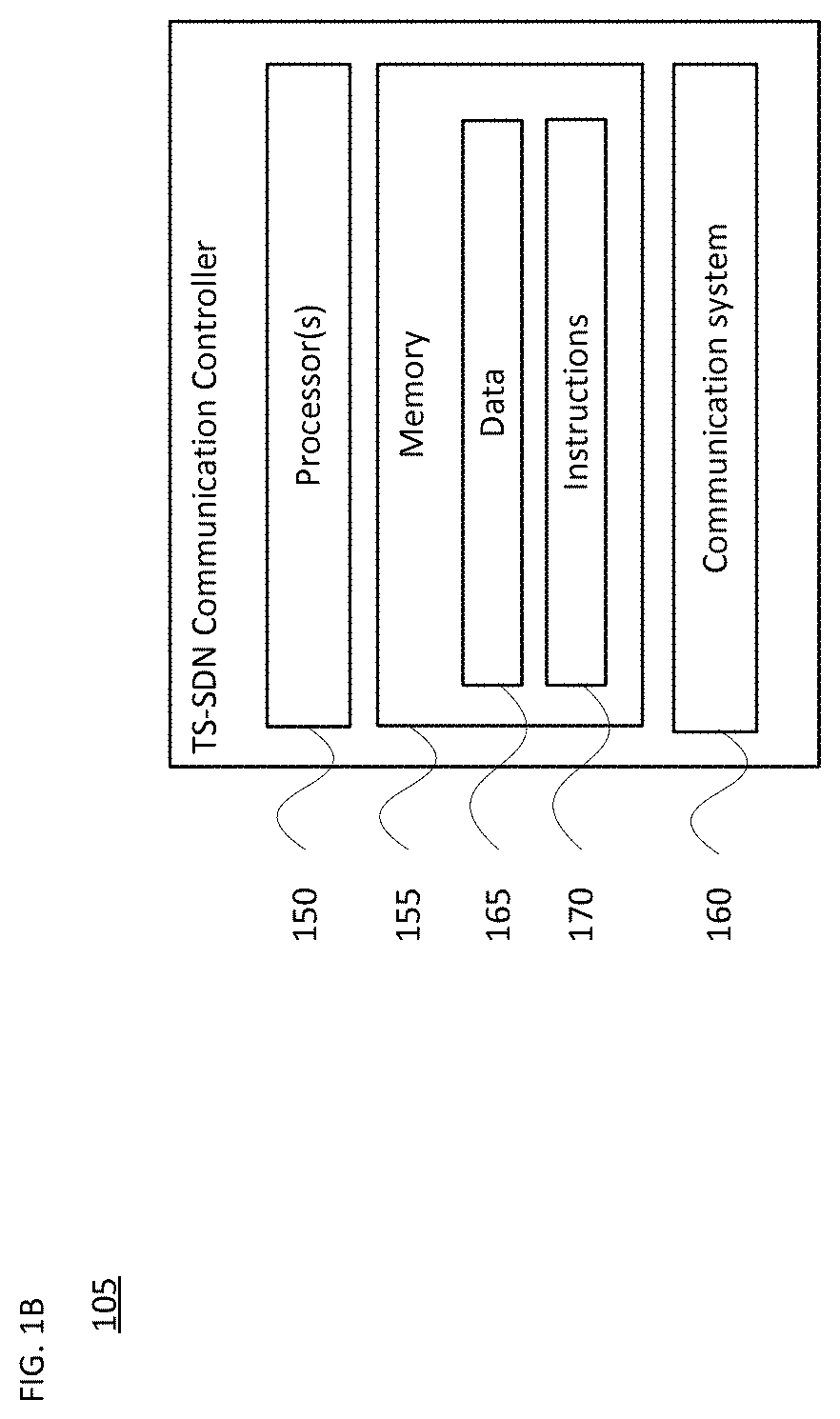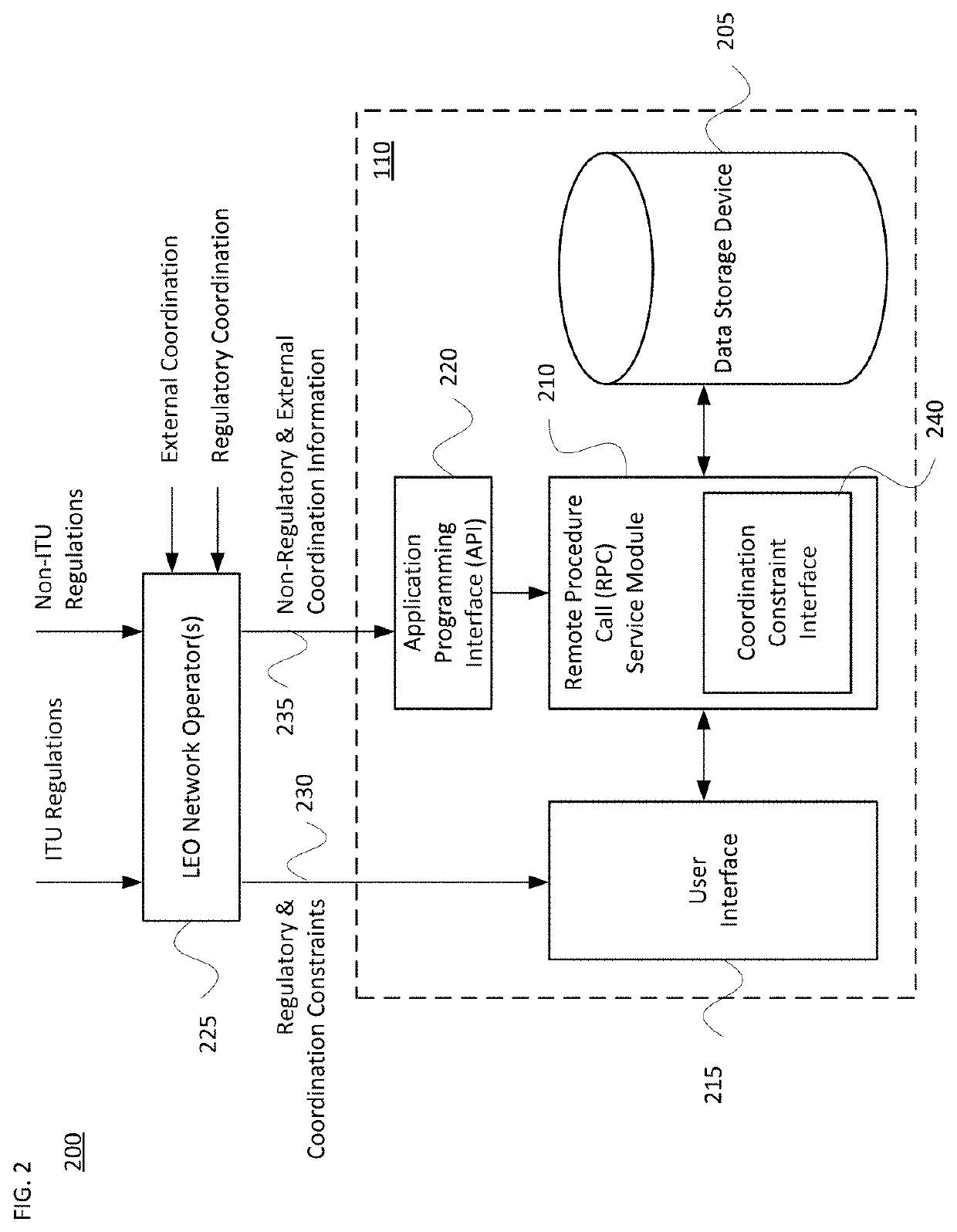Coordination of spectrum allocation and interference avoidance among high-altitude networks
a technology of interference avoidance and spectrum allocation, applied in the direction of network topologies, substation equipment, electrical equipment, etc., can solve the problems of limiting the scale and impact of future haps, high inefficiency, and complicated interference avoidance, so as to reduce the cost, increase the demand for data connectivity, and avoid interference more complicated
- Summary
- Abstract
- Description
- Claims
- Application Information
AI Technical Summary
Benefits of technology
Problems solved by technology
Method used
Image
Examples
Embodiment Construction
[0014]As shown in FIG. 1A, the technology relates to a TS-SDN system 100 including a TS-SDN communication controller 105 and a TS-SDN database 110. The TS-SDN system 100 coordinates communication beams of HAPs in different HANs in order to increase efficient spectrum use and to maximize throughput. The beams may be, e.g., RF or optical communication beams. For example, as shown in FIG. 1, the HANs may include satellite networks 115a and 115b, and a balloon network 120, each including one or more HAPs. Spectrum owners of balloon networks, such as the balloon network 120, have a strong interest in a central instance to enact bilateral spectrum policies, as they may be required to coordinate around the primary spectrum usage of other networks, such as satellite networks 115a and 115b. The TS-SDN system 100 may be located in one or more ground stations, one or more HAPs, or split up among both the one or more ground stations and the one or more HAPs.
[0015]FIG. 1B is a functional diagram...
PUM
 Login to View More
Login to View More Abstract
Description
Claims
Application Information
 Login to View More
Login to View More - R&D
- Intellectual Property
- Life Sciences
- Materials
- Tech Scout
- Unparalleled Data Quality
- Higher Quality Content
- 60% Fewer Hallucinations
Browse by: Latest US Patents, China's latest patents, Technical Efficacy Thesaurus, Application Domain, Technology Topic, Popular Technical Reports.
© 2025 PatSnap. All rights reserved.Legal|Privacy policy|Modern Slavery Act Transparency Statement|Sitemap|About US| Contact US: help@patsnap.com



